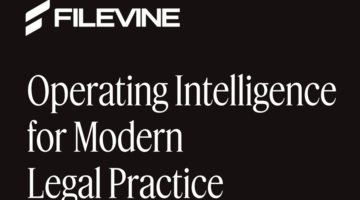 The judges, arbitrators, and juries who will decide your cases may be brighter and more open minded than you, but they will never devote the time to your cases that you do. Advocate accordingly in your writing.
The judges, arbitrators, and juries who will decide your cases may be brighter and more open minded than you, but they will never devote the time to your cases that you do. Advocate accordingly in your writing.
A jury, or judge, or panel of arbitrators, no matter how smart or dedicated they are, will never devote the time and energy to our cases that we will. It doesn’t work that way, nor should it: at our firm, when we do it well (and outside of the TRO/preliminary injunction context), we outright marinate our minds in our cases, thinking, talking and writing about them for months or years before getting before a fact finder in any hearing. That is why the best trial lawyers will keep their stories super tight, always assume that less is more, and constantly seek to cut down what evidence is presented at a trial or hearing. The judge or jury or arbitrators simply do not care about the details like we do, or, at least, cannot devote the time to the details that we can.
This principle applies across the board in litigation: assume you will get very little time at that status conference, at that argument, on that call, at that hearing, or at that trial. But the best trial lawyers realize that such principle does not only apply to oral advocacy. In your writing, assume that your reader is distracted, busy, and simply will not spend much time on what you write.

How Filevine Helps In-House Legal Teams Manage Every Matter With Confidence
AI powers tools for data intake, document management, and drafting contracts.
This is not always the case. I thoroughly enjoy litigating in the federal appellate courts since I find that the judges are often extremely well prepared. It seems like they have read everything. And some of my good friends clerked on such courts and frankly astounded me with their tales of discipline: reading every single page of the record and the briefings in every single case.
Such examples of discipline and effort — if true — are simply not the norm, however. Most judges are just too busy, with too full of a docket, to read diligently every page of every brief. And even if they have, it does not mean the judges will recall or reread all those pages immediately before an argument.
Fine — we can accept that we spend more time on our writings than our audiences ever will. How do we address this in our writing? We should write our advocacy writings in layers, summarizing the main points as quickly as we can in early layers and building on the layers in the document.
This means in a typical trial court brief, we should exploit thoroughly the first advocacy layer of a table of contents. A frightening number of lawyers think tables of contents matter little. They are wrong. I have spoken to far too many judges and clerks who admit that before an argument all they had time to review were the tables of contents of the briefs, or, sometimes, just the table of contents of the reply brief. Your table of contents should be a true, focused summary of argument. If done well, all the reader has to know is your table of contents in order to know your entire argument (if not the nuances of it or the entire story of the case).

Chrometa: Turning Time Into Billable Value For Modern Lawyers
Adoption of Chrometa represents more than a technological upgrade; it reflects a professional philosophy that values accuracy, transparency, and efficiency.
In a brief the next layer to exploit is the preliminary statement. By the time the reader is done with that — and hopefully it is only a few pages — the reader should not only know your argument, but some of the key support for it, and the story of the case (told truthfully but from your perspective). Don’t worry about burdening your reader with definitions and citations; wait till the argument section for that. Your reader doesn’t expect all that in the preliminary statement anyway. Give the meat of it and then build on everything in the argument.
This layering rule doesn’t simply apply to complex memoranda of law which have these discrete sections. It applies to letters, even emails: the first line or two of shorter and less structured documents should state succinctly what you’re looking for and why you deserve it. Then layer as appropriate, but assume your busy clerk or judge or arbitrator may only have time to read the first few sentences of whatever you write.
There’s nothing wrong with enjoying our work and maybe even being a bit self-indulgent in our argument, enjoying the back and forth and discussion and editing with our colleagues. But when it comes time to submit any writing to someone who has to decide an issue, assume they are busy, and use layering to win for your clients.
 John Balestriere is an entrepreneurial trial lawyer who founded his firm after working as a prosecutor and litigator at a small firm. He is a partner at trial and investigations law firm Balestriere Fariello in New York, where he and his colleagues represent domestic and international clients in litigation, arbitration, appeals, and investigations. You can reach him by email at [email protected].
John Balestriere is an entrepreneurial trial lawyer who founded his firm after working as a prosecutor and litigator at a small firm. He is a partner at trial and investigations law firm Balestriere Fariello in New York, where he and his colleagues represent domestic and international clients in litigation, arbitration, appeals, and investigations. You can reach him by email at [email protected].